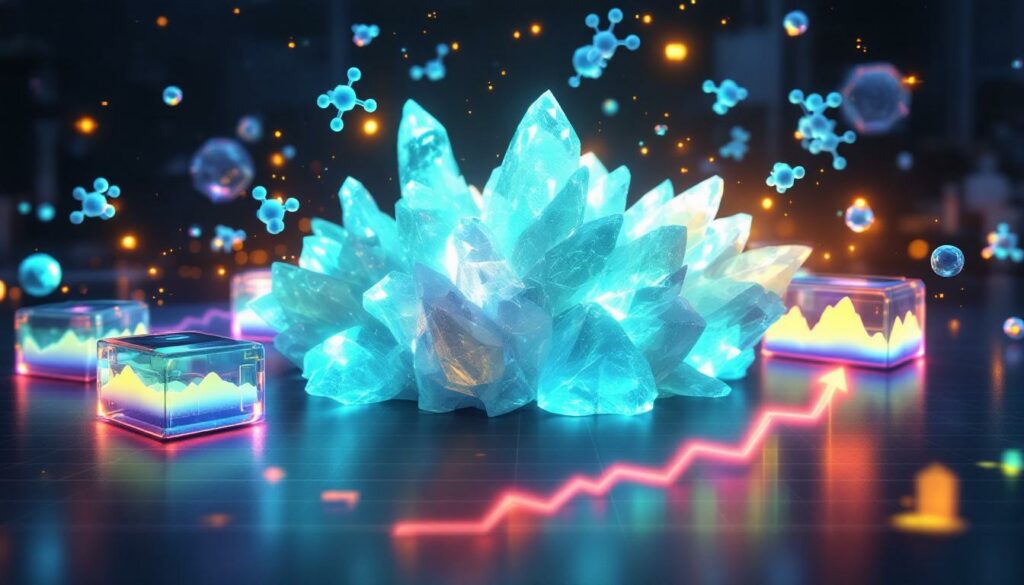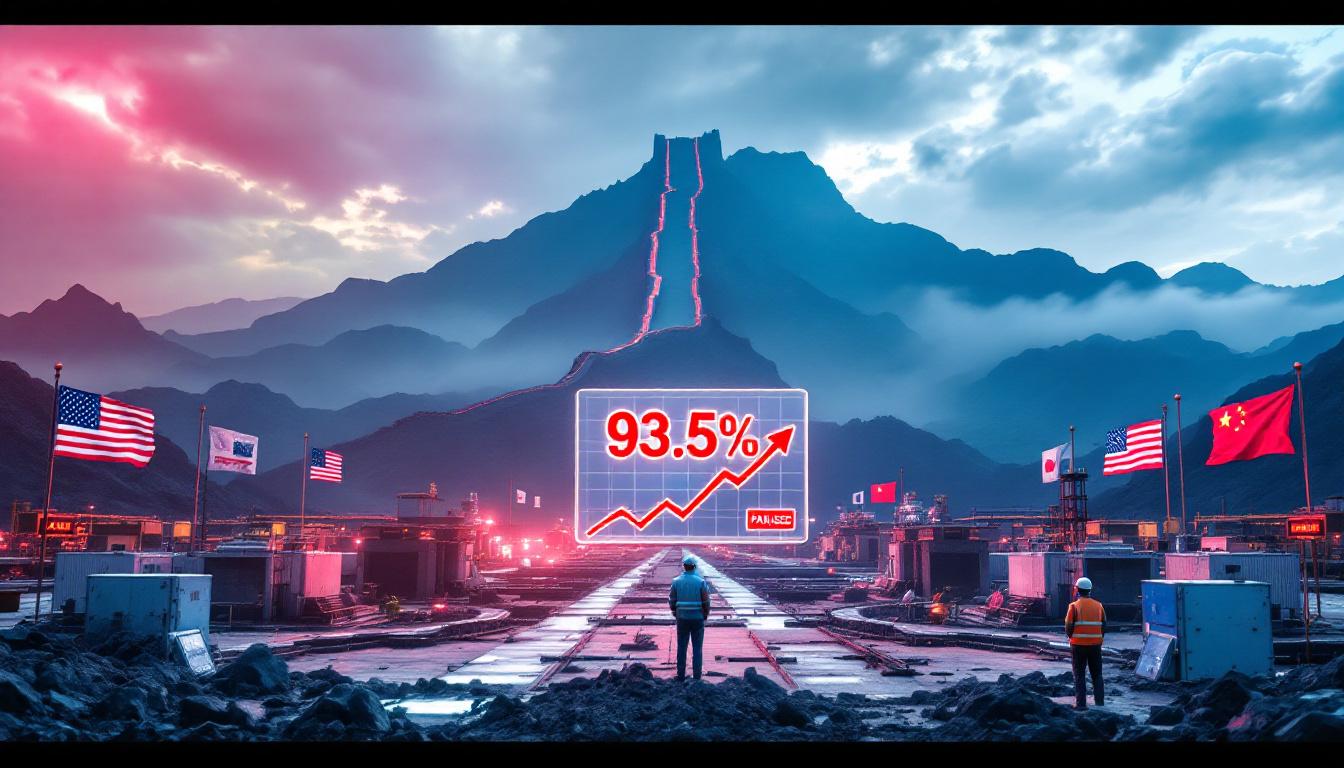What Shaped the Phosphorus Chemical Market in Early 2025?
The phosphorus chemical industry experienced remarkable volatility during the first half of 2025, characterized by significant price fluctuations and strategic capacity adjustments. According to Shanghai Metal Market's (SMM) industry analysis, this volatility stemmed from "a complex interplay of global economic conditions, raw material availability, and surging demand from the new energy sector."
Perhaps most notably, the industry witnessed an unprecedented shift in consumption patterns, with phosphorus resources increasingly diverted toward new energy applications—particularly lithium battery technologies—compared to traditional agricultural uses.
"The integration between phosphorus chemicals and battery materials created a new dynamic in market fundamentals that wasn't present in previous cycles," notes SMM's July 2025 sector report. This integration represents a fundamental restructuring of demand patterns that continues to reshape the industry's strategic landscape.
Key Market Influencers in H1 2025
The primary factors driving market conditions included:
- Global economic headwinds affecting industrial production and logistics networks, with ripple effects throughout phosphorus chemical supply chains
- Raw material supply constraints particularly affecting phosphate ore availability in key mining regions
- Accelerated demand from battery manufacturers, with year-over-year consumption increases for phosphoric acid in LFP cathode production
- Regional supply-demand imbalances creating arbitrage opportunities and price divergence across markets
- Seasonal agricultural cycles continuing to influence traditional phosphorus chemical applications despite new energy growth
The fluctuations in phosphorus chemical prices directly impacted production costs for lithium battery materials, establishing a clear price transmission mechanism between these previously separate sectors.
New Energy Sector's Growing Impact
The transformation of demand patterns represents perhaps the most significant shift in the phosphorus chemical market landscape. Key developments included:
- Substantial volume increases in phosphorus resource consumption for battery materials production, with industrial-grade MAP demand for LFP cathodes growing at double-digit rates year-over-year
- Higher utilization rates of phosphoric acid in LFP cathode manufacturing processes, creating new competition for traditionally agriculture-focused supplies
- Expanded application of yellow phosphorus in LiPF6 production for electrolytes, establishing a critical linkage to the broader battery supply chain
- Accelerated consumption compared to H1 2024 across all phosphorus chemical segments serving new energy opportunities
"The phosphorus chemical industry has become deeply integrated with the lithium battery industry chain, supporting lithium battery material systems from phosphorus-based cathode materials to electrolytes like LiPF6," highlights SMM's industry analysis report.
This integration has fundamentally altered the traditional supply-demand dynamics that historically governed the phosphorus chemical sector, creating new price correlations and strategic considerations for industry participants.
How Did Phosphorus Chemical Prices Perform in H1 2025?
The first half of 2025 revealed divergent price trends across phosphorus chemical products, reflecting the complex interplay between supply constraints, demand fluctuations, and regional market dynamics. The price movements tell a story of an industry in transition, balancing traditional applications with emerging energy sector demand.
Phosphate Ore Price Trajectory
Phosphate ore, the fundamental raw material underpinning the entire phosphorus chemical value chain, experienced a volatile but ultimately profitable pricing environment in H1 2025:
- Early 2025: Prices climbed significantly due to supply tightness in key mining regions and robust demand pull from downstream processors
- Mid-H1 period: A gradual price correction emerged as demand softened and some new mining capacity came online
- Overall trend: Despite the mid-period correction, prices maintained historically elevated levels compared to the 2020-2024 period
- Profit margins: Mining operations sustained "robust profitability despite fluctuations," according to SMM's industry analysis, with operating margins remaining well above historical averages
The resilience of phosphate ore prices throughout H1 2025 reflects the structural changes in demand patterns, with new energy applications providing a buffer against traditional seasonal weakness.
Phosphoric Acid Market Dynamics
Phosphoric acid, a critical intermediate product for both agricultural and industrial applications, showed interesting regional disparities in pricing:
- Geographic variations: Significant price differences emerged across regional markets, with SMM reporting particularly notable disparities between Chinese domestic prices and international benchmarks
- General trend: The overall market exhibited stabilization with slight downward pressure throughout H1
- Price influencers: Raw material costs, transportation challenges (especially elevated shipping rates), and regional demand variations created a complex pricing environment
- Market equilibrium: A gradual movement toward supply-demand balance became evident by mid-year, though regional differences persisted
Industry observers noted that phosphoric acid pricing has become increasingly sensitive to developments in the LFP battery sector, creating new seasonal patterns that sometimes run counter to traditional agricultural demand cycles.
Industrial-Grade MAP Price Patterns
Industrial-grade monoammonium phosphate (MAP), which serves both traditional applications and the growing LFP cathode segment, displayed pronounced seasonal characteristics:
- Cyclical movements: Prices showed marked fluctuations aligned with agricultural fertilizer demand cycles
- Peak pricing period: The March-April timeframe represented the pricing high point for H1 2025
- Late H1 trajectory: A stabilization pattern emerged with downward pressure becoming evident in the May-June period
- Demand competition: The dual influence from agricultural and new energy applications created interesting price support mechanisms during traditionally weaker periods
"Industrial-grade MAP price movements were affected by downstream demand and costs, exhibiting volatility linked to agricultural cycles and new energy demand," states SMM's price review. This dual-market dynamic represents a fundamental shift in the traditional MAP pricing model.
What Production Capacity Trends Emerged in H1 2025?
The capacity landscape for phosphorus chemicals underwent significant evolution during the first half of 2025, reflecting strategic responses to changing market conditions and emerging opportunities in new energy applications.
Capacity Expansion Initiatives
The phosphorus chemical industry continued its capacity growth trajectory in H1 2025, though with increasingly targeted strategic focus:
- Resource capacity growth: Annual phosphorus resource processing capacity maintained its upward trajectory, though at a more measured pace than the previous expansion wave
- Segment-specific investments: Capacity additions were particularly concentrated in segments serving LFP-related production, with several major manufacturers completing significant capacity expansion strategies
- Scale economics: SMM reports that "companies actively deployed production facilities, gradually realizing industry scale effects" as consolidation created more efficient operational structures
- Geographic diversification: Capacity distribution showed increasing geographic optimization, with new investments strategically positioned to minimize logistics costs and maximize supply chain efficiencies
The strategic nature of capacity additions in H1 2025 represented a more mature phase of industry development, with targeted investments replacing the broader capacity growth seen in previous years.
Production Output Variations
Actual production levels across the phosphorus chemical spectrum showed interesting patterns in H1 2025:
- Cyclical fluctuations: Product-specific output volumes, particularly for LiPF6 and LFP precursors, displayed phased variations throughout the period
- Demand-driven scheduling: Production planning showed clear correlation with downstream demand cycles from new energy applications, especially power battery manufacturing and energy storage system deployment
- Seasonal adaptation: Output levels increasingly aligned with new energy sector seasonality, which sometimes runs counter to traditional agricultural demand patterns
- Material availability impact: Raw material supply continuity became a critical factor in production scheduling and capacity utilization decisions
These production patterns reveal an industry increasingly attuned to the demands of its new energy customers, with manufacturing schedules adapting to the battery industry's production cycles rather than traditional agricultural seasonality.
How Is the Phosphorus Chemical Industry Integrated with Lithium Batteries?
The phosphorus chemical sector has established profound interconnections with the lithium battery value chain, creating critical linkages that now define significant portions of both industries' strategic landscapes.
Value Chain Integration Points
The integration between phosphorus chemicals and lithium batteries operates across multiple technical and commercial dimensions:
- Cathode materials pathway: Phosphorus-based compounds, particularly phosphoric acid and industrial-grade MAP, form the foundation of LFP cathode technology, which continues gaining market share in specific battery applications
- Electrolyte components: Yellow phosphorus serves as a key input for LiPF6 production, establishing a direct connection to the electrolyte segment of lithium battery manufacturing
- Consumption pattern evolution: A growing proportion of industrial-grade MAP production is now directed to new energy applications, reshaping traditional market allocations
- Cost structure relationships: Phosphorus chemical price movements create direct ripple effects throughout the battery material production chain, influencing end-product economics for battery manufacturers
"The phosphorus chemical industry is deeply integrated with the lithium battery industry chain, supporting lithium battery material systems from phosphorus-based cathode materials to electrolytes," emphasizes the SMM value chain assessment. This integration represents a fundamental restructuring of traditional market relationships.
Market Feedback Mechanisms
The integration between these industries has created new market dynamics and feedback loops:
- Price transmission effects now flow bidirectionally throughout the integrated supply chain, with developments in either sector influencing the other
- Competitive positioning increasingly depends on raw material cost structures and supply security arrangements
- Innovation drivers are emerging from cross-industry collaboration, with phosphorus chemical producers and battery manufacturers jointly developing optimized materials
- Strategic partnerships are forming between major players across both sectors to secure stable supply relationships and technological advantages
These evolving relationships create both opportunities and challenges for industry participants, requiring new strategic approaches and business models to navigate the integrated value chain successfully.
What's the Outlook for the Phosphorus Chemical Industry in H2 2025?
Despite price fluctuations and demand variations in H1 2025, the phosphorus chemical industry maintained an overall growth trajectory that appears set to continue through the second half of the year, though with important nuances and potential challenges.
Short-Term Market Expectations
The immediate outlook for H2 2025 suggests several important developments:
- Seasonal demand uplift: SMM forecasts a "boost in demand for phosphorus chemical products in H2 2025 driven by the peak season for downstream new energy applications"
- NEV production cycle impact: The traditional year-end production surge for new energy vehicles is expected to drive increased consumption of phosphorus-based battery materials
- Energy storage project momentum: Concentrated construction schedules for utility-scale energy storage systems should create periods of elevated demand for LFP materials
- Competitive market dynamics: The release of new production capacity is likely to intensify competition, potentially pressuring prices and profit margins despite strong demand fundamentals
The combination of these factors creates a mixed but generally positive outlook for the second half of 2025, with volume growth potentially offset by pricing challenges in some segments.
Long-Term Industry Prospects
Looking beyond the immediate horizon, several structural trends appear likely to shape the phosphorus chemical industry's trajectory:
- Growth potential: The sector anticipates "sustained growth trajectory for high-energy-density phosphorus-based battery materials" as energy storage applications continue expanding
- Safety-driven innovation: Technical development increasingly focuses on enhancing the safety characteristics of phosphorus compounds used in battery applications
- Research priorities: R&D investments are centered on performance optimization for phosphorus-based cathode materials, particularly addressing energy density limitations
- Collaborative imperatives: Supply chain collaboration is becoming increasingly critical for stability as interdependencies between sectors deepen
These longer-term trends suggest a transformation of the phosphorus chemical industry from a primarily agricultural/industrial sector to one with significant energy technology exposure, creating new strategic imperatives and growth opportunities.
What Challenges Must the Industry Address?
The phosphorus chemical sector faces several significant challenges that will require strategic responses to ensure sustainable growth and competitive positioning in the evolving marketplace.
Capacity Management Concerns
The rapid capacity expansion of recent years has created potential structural challenges:
- Overcapacity risks: SMM highlights "potential overcapacity risks in specific product segments" as multiple producers complete expansion projects simultaneously
- Utilization optimization: Strategies for maintaining healthy utilization rates across production assets will become increasingly critical for profitability
- Investment timing: Careful consideration of expansion timing becomes essential to avoid contributing to market saturation
- Regional capacity balancing: Aligning production capacity with emerging demand centers requires sophisticated market intelligence and forecasting
Industry participants must navigate these capacity challenges through disciplined investment planning and potential consolidation strategies to maintain market balance.
Environmental Compliance Requirements
Environmental factors are becoming increasingly central to industry operations and strategy:
- Regulatory framework evolution: "Stricter regulatory frameworks affecting production processes" are emerging across multiple jurisdictions, requiring adaptation and investment
- Sustainability imperative: Environmental performance is transitioning from compliance necessity to competitive differentiator as downstream customers prioritize sustainable supply chains
- Emissions technology investment: New production processes and emissions control technologies require significant capital allocation to meet evolving mining environmental standards
- Circular economy adoption: Resource efficiency approaches are gaining importance throughout the value chain, with phosphorus recovery and recycling attracting increased attention
These environmental considerations represent both a challenge and an opportunity for forward-thinking industry participants willing to lead in sustainability innovation.
Innovation Imperatives
The competitive landscape increasingly rewards technological leadership:
- Performance enhancement: Battery material customers demand continuous improvement in phosphorus-based cathode performance characteristics
- Cost reduction pressures: Competitive intensity drives ongoing focus on process efficiency and cost optimization throughout the value chain
- Application diversification: Developing new applications for phosphorus chemicals can help balance market exposure and reduce cyclical risks
- Process improvement: Manufacturing technology innovation remains essential for maintaining competitive positioning in a rapidly evolving market
The industry's ability to meet these innovation challenges will significantly influence its long-term growth potential and value creation capacity.
How Can Phosphorus Chemical Companies Position for Success?
To thrive in this evolving landscape, phosphorus chemical enterprises must adopt strategic approaches that address both immediate market conditions and longer-term industry transformation.
Strategic Focus Areas
Several strategic priorities emerge as particularly critical for industry participants:
- Technology leadership: Investments in R&D focused on performance-enhancing innovations can create sustainable competitive advantages
- Value chain integration: Securing stable supply relationships through vertical integration or strategic partnerships provides important operational stability
- Operational excellence: Production efficiency optimization remains essential for maintaining cost competitiveness in an increasingly competitive landscape
- Market diversification: Reducing dependency on specific application segments helps balance exposure to market volatility and cyclical demand patterns
Companies that successfully address these strategic imperatives will be better positioned to navigate market challenges and capitalize on emerging opportunities.
Collaborative Opportunities
The increasingly integrated nature of the phosphorus chemical and new energy sectors creates important collaborative possibilities:
- Joint development initiatives: Partnerships with battery manufacturers can accelerate material optimization and application-specific innovation
- Research alliances: Collaboration with academic and technology institutions provides access to cutting-edge scientific developments
- Industry consortium participation: Addressing common challenges through industry-wide initiatives can create shared benefits while managing individual investment requirements
- Customer co-creation: Aligning product development with application needs through collaborative innovation processes enhances value proposition and market relevance
"Focus on technological R&D and industry chain collaboration" represents a key strategic recommendation from SMM's industry outlook, highlighting the importance of these collaborative approaches.
FAQ: Phosphorus Chemical Industry Insights
How is the new energy sector influencing phosphorus chemical demand?
The new energy sector has become a significant demand driver for phosphorus chemicals, particularly through growing production of LFP cathode materials and LiPF6 electrolyte components for lithium batteries. This demand shift is creating new consumption patterns that complement traditional agricultural and industrial applications, fundamentally altering market dynamics and seasonal demand cycles.
What factors caused phosphate ore price fluctuations in H1 2025?
Phosphate ore prices in H1 2025 were influenced by supply constraints early in the year, followed by softening demand that led to price corrections. Despite these fluctuations, prices remained at historically elevated levels, supporting strong profitability for mining operations. The structural shift in demand patterns, particularly from phosphate market trends in new energy applications, has created a new pricing environment with different seasonal characteristics than historical norms.
How are capacity expansions affecting market dynamics?
The ongoing capacity expansions across the phosphorus chemical industry are gradually enabling scale economies while also creating potential oversupply risks in specific product segments. These capacity adjustments are reshaping regional supply-demand patterns and influencing competitive positioning. Companies are increasingly focused on strategic capacity deployment that aligns with evolving market opportunities rather than broad-based expansion.
What are the key integration points between phosphorus chemicals and lithium batteries?
Phosphorus chemicals are integrated into lithium battery production primarily through LFP cathode materials (using phosphoric acid and industrial-grade MAP) and electrolyte components (with yellow phosphorus as a key input for LiPF6). These integration points create important price transmission effects throughout the value chain and establish strategic interdependencies between previously separate industry sectors.
*[MAP]: Monoammonium Phosphate
*[LFP]: Lithium Iron Phosphate
*[NEV]: New Energy Vehicle
*[ESS]: Energy Storage System
*[LiPF6]: Lithium Hexafluorophosphate
Want to Capitalise on the Next Major Mineral Discovery?
Stay ahead of the market with Discovery Alert's proprietary Discovery IQ model, which instantly notifies investors of significant ASX mineral discoveries and transforms complex data into actionable insights. Explore how historic discoveries have generated substantial returns by visiting the Discovery Alert discoveries page and begin your 30-day free trial today.




